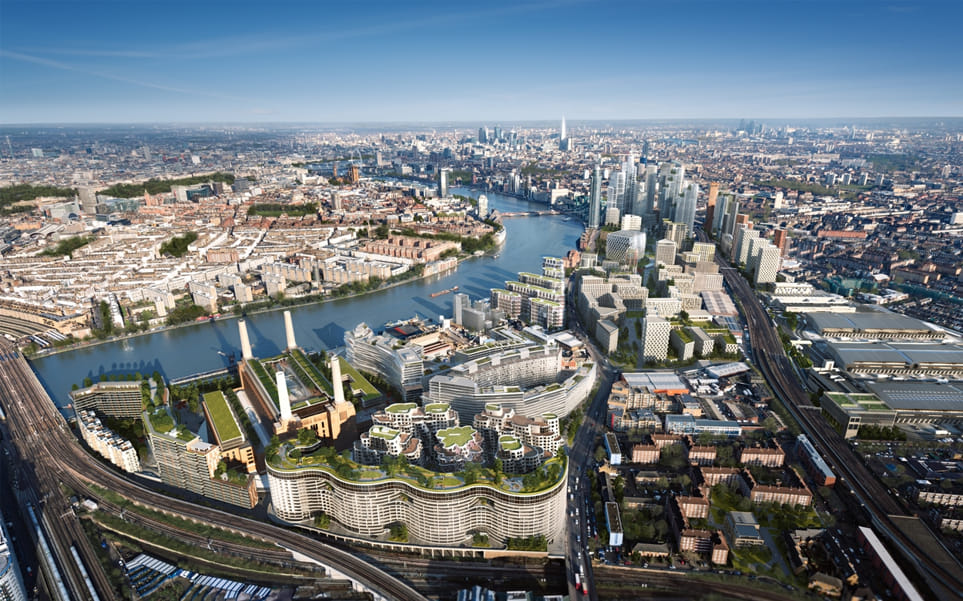Wandsworth Nine Elms Flat Conversion: Revitalizing Urban Living
Wandsworth Nine Elms, a burgeoning district in the heart of London, is undergoing a remarkable metamorphosis. Known for its rich historical tapestry and modern charm, Nine Elms is rapidly becoming a coveted destination for both residential and commercial endeavors. Amid this transformation, flat conversions stand out as a trend that is reshaping the architectural and social landscape. This comprehensive article explores the intricate facets of Wandsworth Nine Elms flat conversions, examining their significance, the detailed processes involved, the myriad benefits they offer, and the promising future they herald.
The Evolution of Nine Elms: A Historical Context
Nine Elms boasts a rich historical heritage, evolving from an industrial powerhouse to a contemporary urban oasis. Once renowned for its industrial activities, the area was home to significant landmarks such as the Battersea Power Station and the iconic New Covent Garden Market. Over the years, a concerted effort to rejuvenate and modernize Nine Elms has paved the way for contemporary developments, skillfully blending historical elements with modern innovations.
The Growing Popularity of Flat Conversions
Flat conversions involve transforming larger residential or commercial properties into multiple self-contained units. This practice has gained significant traction in Nine Elms for several compelling reasons:
- Optimal Space Utilization: In an era where urban spaces are becoming increasingly congested, optimizing available space is paramount. Flat conversions enable property owners to maximize their real estate, creating multiple living units within a single structure.
- Economic Efficiency: For property developers, converting existing buildings into flats is often more cost-effective than new construction. This approach leverages existing structures, reducing material and labor costs, and speeding up project timelines.
- Addressing Housing Demand: London faces a persistent housing shortage. Flat conversions in Nine Elms contribute to alleviating this demand by providing additional residential units, catering to a diverse demographic that includes young professionals, families, and retirees.
- Preserving Architectural Integrity: Many buildings in Nine Elms hold significant architectural and historical value. Converting these structures into flats allows for their preservation, maintaining aesthetic and historical significance while adapting to contemporary needs.
The Detailed Process of Flat Conversions
Converting a property into flats is a complex and multifaceted process that involves several critical stages:
- Feasibility Study: The journey begins with a thorough feasibility study. This includes assessing the structural integrity of the building, understanding local zoning laws, and determining the potential return on investment. Feasibility studies ensure that the project is viable and aligns with both regulatory requirements and market demands.
- Planning and Design: Once feasibility is established, architects and designers create comprehensive plans. This phase involves designing the layout of the flats, ensuring compliance with building regulations, and integrating modern amenities while preserving any historical features. The goal is to create functional, aesthetically pleasing living spaces that meet contemporary standards.
- Securing Permissions: Flat conversions require various permissions from local authorities. In Nine Elms, this often involves collaborating with the Wandsworth Borough Council to secure planning permissions and building regulation approvals. This stage is crucial for ensuring that the project complies with all legal and regulatory frameworks.
- Construction and Renovation: With permissions in hand, the construction phase begins. This involves significant structural work, including dividing the property into separate units, installing new plumbing and electrical systems, and ensuring each flat meets safety standards. The construction phase transforms the initial vision into tangible living spaces.
- Interior Design and Finishing Touches: Once the structural work is complete, attention shifts to interior design. High-quality finishes, modern appliances, and stylish decor are incorporated to enhance the appeal of the flats. This stage focuses on creating comfortable and attractive living environments.
- Marketing and Sales: The final stage involves marketing the newly converted flats. Effective marketing strategies target potential buyers or renters, highlighting the unique features and benefits of living in Nine Elms. This phase is critical for achieving successful sales or rentals.
Advantages of Flat Conversions in Nine Elms
Flat conversions offer numerous benefits to various stakeholders, including homeowners, investors, residents, and the broader community:
- Enhanced Property Value: For property owners, flat conversions can significantly increase the value of their property. Investors can achieve higher rental yields and better capital appreciation compared to single-family homes. This makes flat conversions a lucrative investment opportunity.
- Modern Living Spaces: For residents, flat conversions provide access to modern, stylish homes in a desirable location. The diversity of units caters to different needs, from compact studios to spacious multi-bedroom flats, ensuring that there is something for everyone.
- Community Development: Flat conversions contribute to community development by increasing the housing supply and bringing more residents into the area. This influx supports local businesses and services, fostering a vibrant and dynamic community atmosphere.
- Sustainable Development: Repurposing existing buildings is a sustainable practice that reduces the need for new construction and minimizes environmental impact. This aligns with broader goals of sustainable urban development and helps reduce the carbon footprint associated with building new structures.
Noteworthy Case Studies of Flat Conversions in Nine Elms
- Battersea Power Station: One of the most iconic landmarks in Nine Elms, the Battersea Power Station, has undergone a significant transformation. While maintaining its historical facade, the interior has been converted into luxurious flats, blending heritage with contemporary living. The development also includes commercial spaces, creating a vibrant mixed-use environment.
- Embassy Gardens: This development features a mix of residential units, including converted flats that offer stunning views of the River Thames. The project emphasizes community living with shared amenities such as gardens, swimming pools, and gyms. Embassy Gardens exemplifies how flat conversions can create desirable living spaces with a strong sense of community.
- The Corniche: Overlooking the Thames, The Corniche is another example of successful flat conversions. The development combines elegant design with modern amenities, attracting high-end buyers and renters. The Corniche showcases the potential for luxury living in converted flats.
The Future Outlook for Flat Conversions in Nine Elms
The future of flat conversions in Nine Elms looks promising. With ongoing developments and an increasing demand for housing, the trend is set to continue and evolve. Future projects are likely to incorporate cutting-edge technology, sustainable practices, and innovative design, further enhancing the appeal of Nine Elms as a prime residential location.
- Integration of Smart Technology: Future flat conversions are expected to integrate smart technology, offering residents enhanced convenience and efficiency. Smart home systems, energy-efficient appliances, and advanced security features will become standard in modern flats.
- Sustainable Practices: Sustainability will remain a key focus, with developers prioritizing eco-friendly materials and construction methods. Green roofs, solar panels, and energy-efficient systems will be integral components of new flat conversions.
- Innovative Design Solutions: As urban living evolves, so too will the design of flats. Flexible living spaces, modular furniture, and innovative storage solutions will cater to the changing needs of residents. Future designs will prioritize functionality and adaptability.
- Enhanced Community Amenities: Future developments will continue to emphasize community amenities, fostering a sense of belonging and community engagement. Shared spaces such as co-working areas, communal gardens, and recreational facilities will be key features of new flat conversions.
Conclusion
Wandsworth Nine Elms flat conversions represent a dynamic shift in urban development, skillfully blending historical charm with modern innovation to create vibrant, livable spaces. As the area continues to evolve, flat conversions will play a crucial role in meeting housing demand, preserving architectural heritage, and fostering community growth. For homeowners, investors, and residents alike, the transformation of Nine Elms offers exciting opportunities and a glimpse into the future of urban living. The ongoing revitalization of Nine Elms stands as a testament to the power of thoughtful urban planning and the enduring appeal of this dynamic London district.



Comments are closed